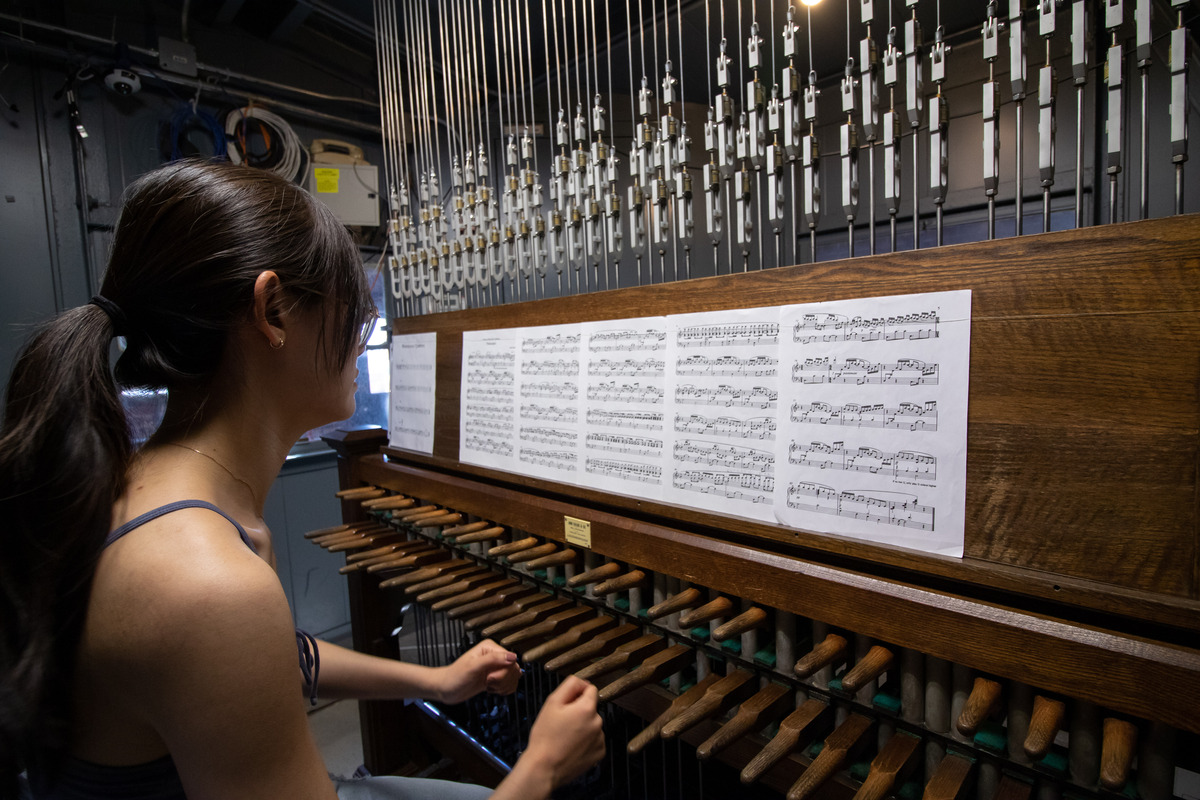Alumni concert celebrates 100 years of women in carillon
The Yale University Guild of Carillonneurs conducted an alumni concert this Sunday celebrating a century of women carillonneurs.

Giri Viswanathan, Photo Editor
The Yale University Guild of Carillonneurs — the group that plays the Harkness Tower bells — put on a “100 Years of Women in Carillon” concert on Sunday as part of a worldwide celebration of the contributions of women to carillon.
The event celebrated the centennial of women in carillon generally — the Yale Guild itself only began accepting women in 1970, one year after the College went coeducational. The concert was part of the guild’s alumni reunion, which also celebrated its 101st year of bellringing at Yale this past weekend.
“Although trained as a historian, I was astounded at how profoundly misleading our understanding of carillon history has been,” said Yale Guild alumna Tiffany Ng ’05. “Contemporary women have believed ourselves recent entrants to the profession, and thus entrants with relatively few role models. I’m thrilled that we can use the 2023 centennial year to promote this ‘newly discovered’ history, which of course has always been there for the telling.”
The carillon instrument itself turned 500 years old in 2015, but women have only been involved in bellringing for about the last century. Even so, at the 2019 Guild of Carillonneurs in North America Congress, only 11.3 percent of the pieces performed were by women. On the international scale, only 21.9 percent of pieces were performed by women at the 2017 World Carillon Federation Congress.
“Carillon history is told as a history of men,” said Ng.
Ng gathered an international team of historians and students to embark on a project to research the first women involved in carillon history. They initially believed that fewer than a dozen women were known to be active with the carillon from the 15th century to 1950 — however, her project has since identified over 100 women.
Her team includes Audrey Dye from the Académie de Musique Wavre in Belgium, Scott Or from the University College London, University of Michigan student researcher Sarah Penrose, incoming Yale graduate student Cedric McCoy, University of Michigan student Emmet Lewis and writers who hail from all over the globe.
Ng previously called Timothy Dwight College her home as an undergraduate student studying English and music. She now lives in Ann Arbor, where she is the associate professor of carillon and chair of the organ department at the University of Michigan.
When Ng received her admissions decision from Yale, she knew she wanted to be involved with the famed Harkness Tower bells, joining the Guild of Carillonneurs as a first year. During her time in the Guild, she helped renovate the tower, curate a bells exhibit at the Yale University Collection of Musical Instruments and prepare for the 2006 national carillon convention at Yale.
“By the time I graduated, I was so deeply invested in the carillon that despite the rarity of job opportunities, I knew I would try to keep playing the carillon for the rest of my life,” she said. “Now I hold one of fewer than a dozen full-time carillon jobs in North America and get to live that dream.”
Ng’s team member Penrose said she has actually never played the carillon. Despite her inexperience, she was captured by the instrument and its rich history. She said she is especially enthusiastic about celebrating the feminist perspective of carillon history.
Back at Yale, Guild co-chairs Kimie Han ’23 and Julia Zheng ’23 have been focused on organizing the “100 Years of Women in Carillon” concert.”
“Music is a vessel for us to interpret and carry the emotions and reflections of a composer into the present,” Zheng said. “To be able to amplify music composed by the thriving community of women carillonists through Harkness Tower, the ultimate megaphone, is a powerful feeling.”
Zheng said she came to love the Guild and the carillon through the five-week initiation process, when she learned the workings of managing 43 tons of bronze bells whose sound can be heard from almost a mile away.
She commented on the duality of carillon performance as an art that is both public and hidden. Carillonneurs play sequestered in Harkness, she said, but members of the Yale community hear them from all over campus.
“It’s our responsibility as performers to see our music as something deeply intertwined with the fabric of students’ lives as they walk, pass by, linger for a moment: art with direct impact, not art created in a playing cabin vacuum,” she said. “Once we accept this responsibility, the importance of curating repertoire from diverse voices becomes clear.”
The Yale University Guild of Carillonneurs officially formed in 1949.







